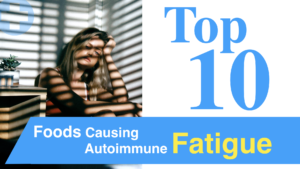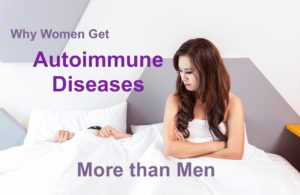Could Your Headache Be a “Toxic Headache?”

Headaches are unfortunately a part of daily life for many with autoimmune diseases. Where do they come from? How can you get rid of them? And how can you ensure they stay away? Headaches come from a wide variety of sources. I’m not going to address all of them, but what I do want to do is zero in on what health professionals are calling “toxic headaches.”
Did you know that according to Stanford Health Care
“the second most common type of vascular headache is a toxic headache.”1
They go on to say that these headaches come along with many other different symptoms
“as well as the presence of foreign chemicals in the body.” (ibid)
It’s these foreign chemicals, aka toxins, that seem to be the culprit in inducing many headaches.
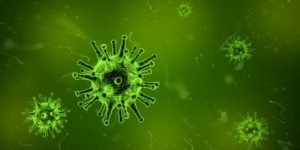
If I had to summarize only one factor causing autoimmune diseases, I could do it well with one word — toxins. It’s simply a matter of what form the toxins come in. Whether it’s environmental toxins, toxic food, toxic emotions, mutated genes due to prior toxin exposure, or a combination
of these, it’s all toxin related.
The body is designed to try to preserve itself; it wants to live. So when toxins come into the body, the body tries to expel them. As the toxins are leaving through our avenues of elimination, headaches can occur.
Dr. Joel Fuhrman puts it very simply,
“Headaches tend to occur as the body attempts to detoxify.”2
There can be many, many different sources of headaches, and the purpose of this article is to help you identify if yours happen to be chemical induced. What many health professionals are saying is that the majority of chronic headaches (including migraines) are due partly to a build-up of toxins within your nervous system.
Dr. Ben Kim says,
“The idea is this: when your nervous system is burdened by a steady stream of toxins for an extended period of time, it can become hypersensitive to all types of stimuli such as strong fragrances, loud noises, bright lights, and everyday stimulants found in food and drinks like sugar, artificial sweeteners, alcohol, and MSG. Tension and migraine headaches are often precipitated by an overburdened nervous system that is reacting to one or more such stimuli.”3
So have you been exposed to a “steady stream of toxins?” Consider some of the following possible sources.
Copper
Dr. Lawrence Wilson puts it this way,
“High copper levels are probably the most common biochemical cause of migraine headaches.”
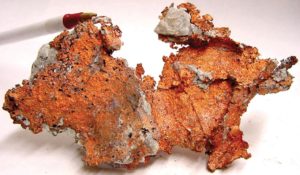
Why? Because copper has a stimulating effect upon certain neurotransmitters (epinephrine, norepinephrine, dopamine, serotonin) which have the ability to irritate the fine structures in the brain.
Where is the extra copper coming from? It could be many different sources. Think about your own personal situation as you read this list.
- weak adrenal glands (adrenals help bind and remove excess copper)
- diets high in copper
- birth control pills
- intrauterine devices
- contaminated water supply
- prenatal exposure
Regarding the last point, the US Environmental Working Group has found that prenatal children already have toxins in them. These toxins can include industrial chemicals, pesticides, flame retardants, Teflon, and even mercury. Yikes!
Workplace Toxins
A study done over 20 years ago found that,
“Headaches are a common complaint after work place or environmental exposures.”4
Are there a lot of chemical fumes at your work environment? Sometimes old buildings have previously unregulated chemicals that are slowly but continually being emitted. Asbestos and old lead-filled paint breaking down over time and secreting into the environment could be a factor inducing headaches.
Low Calcium and Magnesium
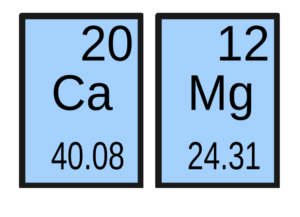
Not only does having too much of the bad stuff create toxic headaches, but these toxins also can deplete us of the good stuff such as calcium and magnesium that keeps the headaches away. Being deficient in calcium and magnesium is shown to lead
to muscle spasms and cramps. These in turn can bring on a tension-induced headache.
How do people often get low in calcium and magnesium? Junk food diets. Not only are these diets often super low in calcium and magnesium, but items such as soft drinks actually deplete the body of these important minerals. Soft drinks prevent the absorption of both calcium and magnesium in the intestinal tract because it often contains phosphoric acid which binds to them.
Household Mold Infections
Mold infections have been known to induce headaches as well as autoimmunity in the body.
Regarding mold, along with a multitude of other possible toxic headache sources, Dr. Charles Matthews of the North Carolina Comprehensive Headache Clinic says,
“We have seen a number of patients whose headaches are triggered by fumes, such as from side stream cigarette exposure, chronic exposure to paint fumes or other organic solvents, other industrial or new building construction exposure, and possibly from mold exposure. We see new patients daily who have a migraine condition that is worsened by environmental triggers. That’s really common. The single most common reason that people don’t respond to treatment for migraines is an interaction with some substance that could be called a toxin—such as a medication—but which stretches the use of the word toxin.”5
I wouldn’t call it a stretch at all. Medications are actually proven to be toxic, especially as they damage organs such as the kidneys and liver.
So analyze your past and current situation. Look at the water you drink, the buildings you live and work in, the medications you take, the food you eat, the cleaning products you use, and personal care products you apply to yourself. If you don’t respond to the typical migraine or headache treatments this could be a reason why.
The One Side Effect Never Mentioned on the Medications Lables

I find that one of the worst side effects of all medications is not even mentioned on the bottle. Demotivation. Meaning people never try to get to the root of their issue and fix it because life is busy and if a headache comes I’ll just pop the pill.
If you are responding well to the typical typical migraine and headache treatments, which are a variety of different medication, I have one word of caution. First, the drugs you are taking are toxic and will add to the overall toxicity of your body which sets you at higher risk for many other diseases.
Second, though taking the drugs gives temporary relief it ensures that you will never find out the true source of your headaches because you will not likely be motivated to find it. Therefore you will be continually dependent on these drugs for symptom relief for the rest of your life until they stop working, or the side effects get so bad you decide to stop taking them on your own. And all this happening while adding to the toxic burden of your body setting you up for other illnesses.
What If I Can't Survive Without My Meds?
I personally have chosen to not take medications for my headaches. This has led me to really make efforts to find the sources of my headaches and fix them. We have found very effective natural methods that take my headaches away. More on that in the next post, How to Calm an Autoimmune Migraine.
If you feel that you can’t function and survive without taking headache medications you could still go through the process of eliminating toxins from your environment and seeing how it effects your headaches. But you have to be a motivated person to do it.
Again, headaches could be from many different sources and I’ll be doing more articles talking about some of those other sources. However one thing is certain, headaches are not natural and it’s your bodies way of telling you something is off and you need to fix it. It might be that toxic exposure is a factor in your particular headache situation.
The Summary
To make it easy for you here are all the different possible toxic sources we’ve discussed that research points to as being a possible factor in headaches:
- Sugar
- Artificial sweeteners
- Alcohol
- MSG
- Copper exposure
- Calcium and magnesium deficiency (possibly due to soda drinks)
- Cigarette smoke
- Chronic exposure to paint fumes
- Chronic exposure to other organic solvents
- Industrial or new building construction exposure
- Mold exposure from work or home
- Medications
Hopefully your headaches are from an environmental source, because typically those are the easiest to fix. The exception to this would be if it’s a work or home environment factor. These may be expensive to fix or even cause you to quit or move. However it's much easier to get a new house or job than a new body.
Don’t forget that once you eliminate the exposure to toxins you will still need to detox the body from toxin build up. How could you do that? I’ll be talking more about how to detox in upcoming videos. Or you can check out our eBook in which we discuss in detail exactly how to do this.
However you could start avoiding toxin sources by understanding what the three most common toxins causing autoimmunity are in your kitchen. Read the next article,
Sources
- https://stanfordhealthcare.org/medical-conditions/blood-heart-circulation/vascular-headaches-migraines/types/toxic-headache.html
- https://www.drfuhrman.com/learn/health-concerns/72/headaches-and-migraines
- http://drbenkim.com/headaches-nutrition.htm
- Headaches from chemical exposures, Martin RW1, Becker C. Headache. 1993 Nov-Dec;33(10):555-9, PMID:8294194
- https://www.platinumenergysystems.ca/migraines-or-toxic-headaches/


